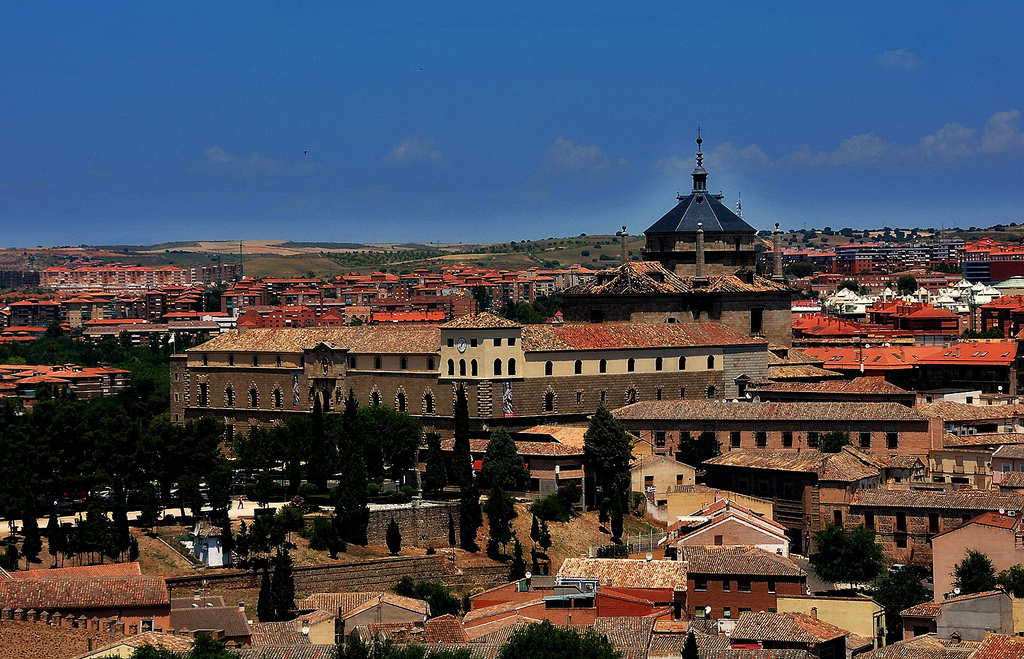Are you in the process of planning a getaway to Spain, or more specifically, to the wonderful city of Toledo? Could you benefit from some ideas regarding what to do and see while visiting this historic and picturesque city? Toledo is one of Spain’s richest treasures, a city visited by thousands of tourists each year for its history, culture and longstanding traditions. Its wide and diverse collection of monuments and ancient buildings allow visitors the unique opportunity to travel back in time and witness firsthand the splendid art and architecture that defined the various periods of its history, a history that according to historians predates the Roman times. Toledo is also renowned for the many museums and galleries located throughout the city, including the subject of this article, the Museo de Arte Contemporáneo, or the Museum of Contemporary Art.
Museum of Contemporary Art
The Museum of Contemporary Art is a state-owned museum that since 1975 has been located in a neighborhood of Toledo known as the Jewish Quarter, an area in which the city’s large community of Jews once lived prior to their state-ordered expulsion in 1492. The museum boasts many exhibits and has a vast collection of 19th and 20th century art on display, including paintings, drawings, lithographs, grabdos and sculptures. Some of the well-known artists whose work is showcased here include Aureliano de Beruete, Ricardo Arredondo, Juan Baroja, Antonio Lopez, Benjamin Palencia and Alberto Sanchez, a surrealist painter who once hailed from Toledo and whose family donated over 11 works to the Museo de Arte Contemporáneo following his death
Perhaps equally as captivating and alluring as the art represented in the Museum of Contemporary Art is the building in which it is housed, known as the Casa de las Cadenas, or the House of Chains. Built in the late 15th century or early 16th century, the House of Chains gets its name from the chains hanging from its façade. It is a wonderful example of the Mudejar style of architecture, a style popular during this era that can be seen throughout Toledo on many other structures. The building has an irregular floor plan and is built around a central courtyard with four wooden galleries on the first floor and two on the second. A portion of the building is supported by four Tuscan columns and coat of arms. Part of its structure leads to a beautiful mezzanine floor, with windows that overlook both the patio and the porch. It was designed with the everyday functions of life in mind; with roof beams made up wood that still show the old polychrome craftsmanship underneath. Its doors and windows are beautifully decorated with atauriques, and the windows are framed with Mudejar plasterwork.
Purchased by the City of Toledo in 1962, the House of Chains was originally intended to serve as a local archive building, but instead was used as a hospice. In 1973, it was ceded to the city’s Department of Fine Arts to create the current museum, a subsidiary of Toledo’s Santa Cruz Museum. The building underwent a major renovation at this time under the direction of architect Manuel Gonzalez Valcarcel, who helped to recover some of the badly damaged decorations of the structure while still respecting the original Mudejar design. The Museum opened for business in 1975.
According to local legend, the chains that dangle from the facade of the museum were brought to the city from Granada, following the liberation of Christian captives from the Moors who had imprisoned them. These chains were later matched to those made by a former resident of the house, a Jewish convert who was secretly making chains for the Moors.



